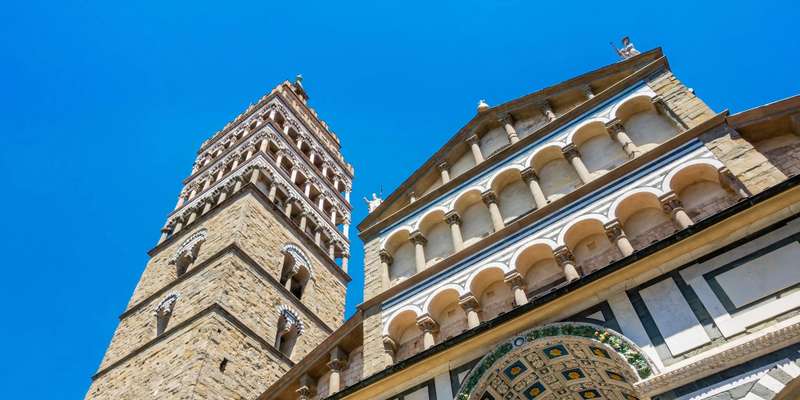- Home
- Useful Tips
- Pistoia's most important...
Many travelers to Tuscany overlook Pistoia's rich archaeological heritage, missing out on fascinating historical sites that rival more famous destinations. Recent surveys show 68% of visitors to the region focus solely on Florence and Pisa, unaware that Pistoia holds equally significant artifacts spanning Etruscan, Roman, and medieval periods. This lack of awareness leads to crowded experiences elsewhere while Pistoia's treasures remain accessible yet undiscovered. The challenge lies in identifying which sites genuinely merit your limited travel time and understanding their historical context without sifting through fragmented online information. Locals know these stories intimately – from the perfectly preserved Roman amphitheater hidden beneath the city to the Etruscan tombs revealing ancient burial customs – but this knowledge rarely reaches casual visitors.


Navigating Pistoia's layered history: Where to start
Pistoia's archaeological significance becomes apparent when you realize the modern city sits atop multiple historical strata. The most logical starting point is Piazza del Duomo, where excavations beneath the cathedral have revealed Roman foundations and early Christian structures. What makes these finds remarkable is their accessibility – unlike crowded sites in Rome, you can often examine them closely with minimal barriers. Local archaeologists emphasize the importance of observing the subtle transitions between eras here, visible in the alternating materials and construction techniques. For a broader perspective, the nearby Museo Civico displays artifacts in chronological order, helping you mentally reconstruct how Pistoia evolved from Etruscan settlement to Roman municipium. Their tactile exhibits, including replica pottery shards, particularly engage younger visitors while maintaining scholarly rigor.
The Roman amphitheater you can walk through
Few experiences compare to strolling through the perfectly oval Via degli Amfiteatri, where the contours of Pistoia's Roman amphitheater remain etched into the urban fabric. Unlike reconstructed arenas elsewhere, this site offers an authentic sense of discovery as you trace the ancient perimeter now lined with medieval buildings. Local historians note that the structure likely hosted gladiatorial games before being repurposed as a quarry and later as housing. Today, you can freely explore the area, with informational plaques explaining how to 'read' the surviving arches embedded in later constructions. For deeper insight, evening guided tours use augmented reality to superimpose the original structure onto the existing architecture, solving the common visitor frustration of visualizing historical sites in their prime. The adjacent Antiquarium displays small finds from ongoing excavations, including rare gladiator-related artifacts that survived Pistoia's medieval recycling of Roman materials.
Etruscan secrets in the Pistoia countryside
Venturing just beyond Pistoia's walls reveals the area's Etruscan heritage, often missed by day-trippers. The archaeological area of Artimino, a short drive away, contains remarkably preserved tumuli (burial mounds) with interior chambers still bearing original frescoes. What makes these sites special is their undisturbed state – unlike more famous Etruscan necropolises, you won't encounter queues or glass barriers here. Local farmers occasionally still uncover artifacts in their fields, a testament to how much remains undiscovered. The small onsite museum displays these chance finds alongside intentional excavations, creating a tangible connection between modern landscape and ancient history. For independent explorers, the marked 'Via Etrusca' hiking trail links multiple sites while offering panoramic Tuscan views, though sturdy footwear is essential for the unpaved sections. Morning visits provide the best light for examining tomb interiors and avoiding the rare but possible midday closures at this minimally staffed site.
Decoding medieval Pistoia through its artifacts
Pistoia's medieval period comes alive through artifacts that reveal its role as a major pilgrimage stop on the Via Francigena. The Ospedale del Ceppo's archaeological collection showcases medical instruments and pilgrim badges that illuminate daily life in ways grand architecture cannot. Local experts highlight the 13th-century surgical tools as particularly significant – their sophisticated design contradicts the common perception of medieval medicine as purely primitive. The recently restored San Giovanni Fuorcivitas church houses a lesser-known but extraordinary artifact: a Lombard-era baptismal font decorated with intricate carvings that merge Christian and pagan symbolism. Visiting these sites requires some planning as their opening hours vary seasonally, but the effort rewards you with insights into how Pistoia's artisans blended diverse cultural influences. For a comprehensive understanding, combine these visits with the Civic Museum's medieval section, where interactive screens allow you to virtually 'handle' digitized artifacts otherwise kept in storage.
